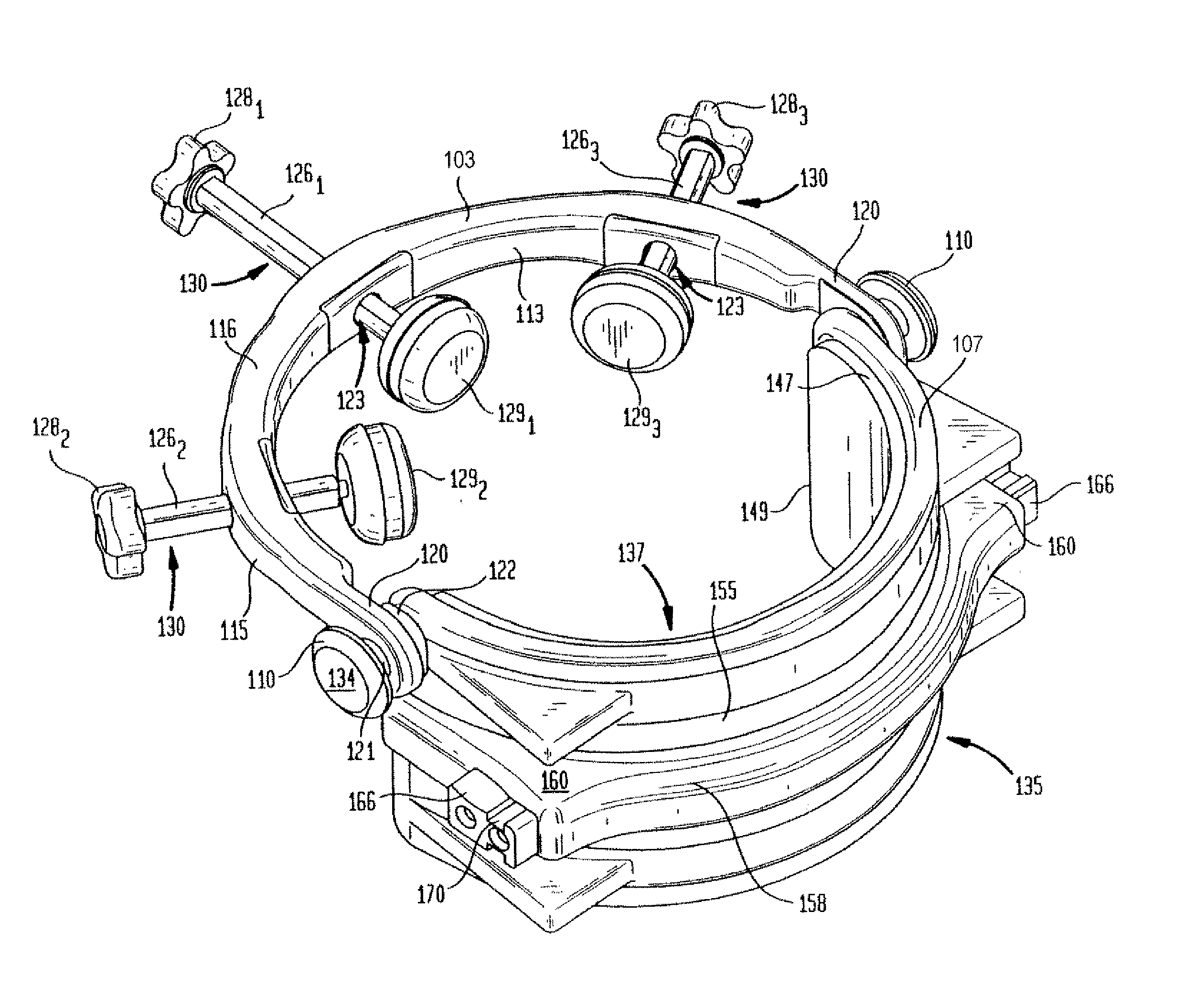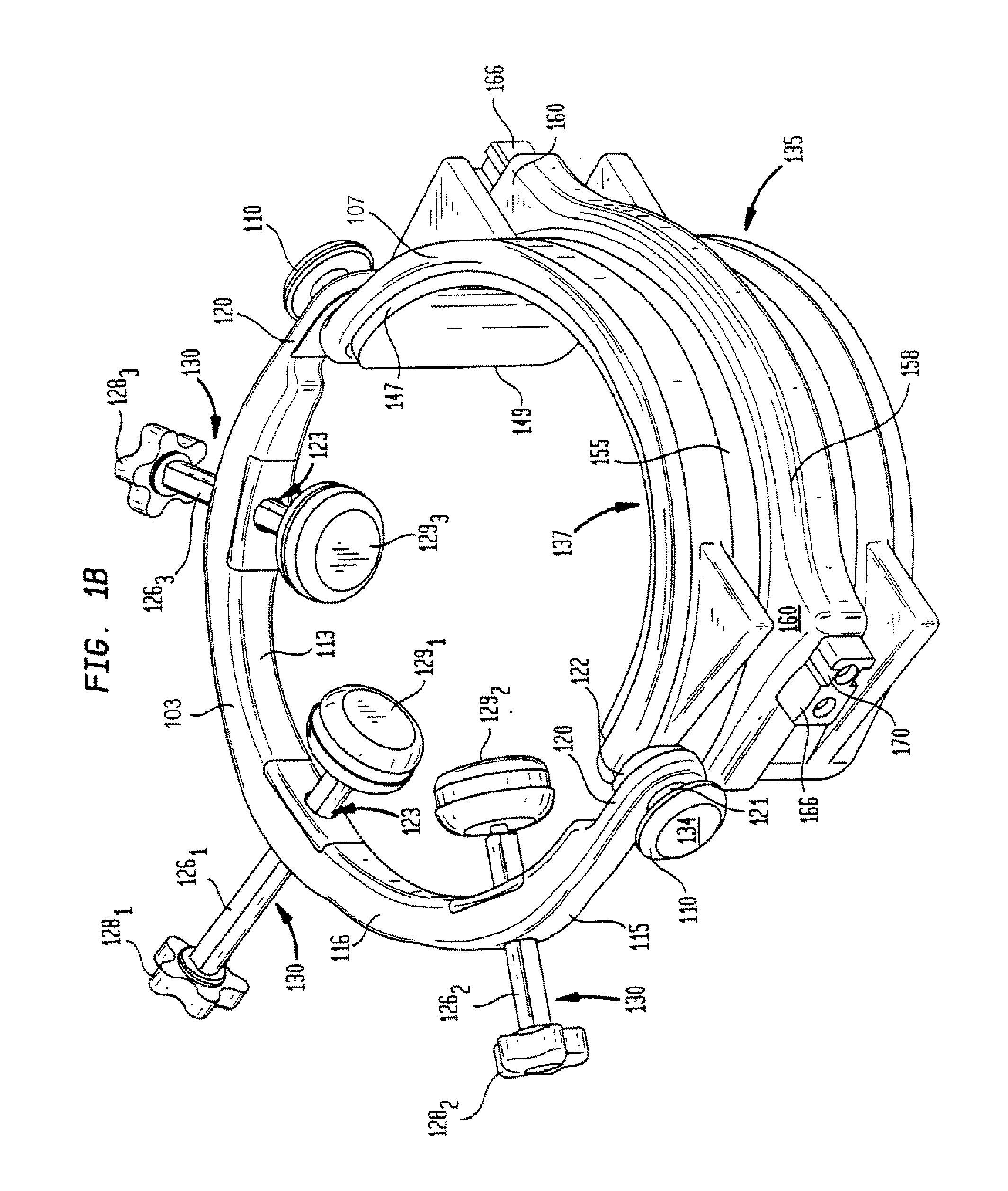Head and neck immobilization in magnetic resonance imaging
a magnetic resonance imaging and head and neck technology, applied in the field of magnetic resonance imaging systems, apparatuses and, can solve the problems of limiting the imaging information obtained, providing a claustrophobic environment for patients, and affecting the comfort level of patients
- Summary
- Abstract
- Description
- Claims
- Application Information
AI Technical Summary
Benefits of technology
Problems solved by technology
Method used
Image
Examples
Embodiment Construction
[0027]An aspect of the present invention is a head and neck immobilization device or halo 100 as shown in FIG. 1, in which FIG. 1A and FIG. 1B show front and rear perspective views of the device 100, respectively. The device 100 comprises a first substantially C-shaped or arcuate member 103 and a second C-shaped or arcuate member 107. The first and second C-shaped members 103 and 107 are mounted to each other by pivot mechanism 110. Pivot mechanism 110 advantageously allow first C-shaped member 103 to pivot about second C-shaped member 107 or vice-versa.
[0028]The first C-shaped member 103 includes an inner side wall 113 and an outer side wall 115. The inner side wall 113 defines an inner surface. The outer side wall 115 similarly defines an outer surface. The inner and outer side walls 113, 115 are terminated at an end by upper lateral wall 116 and at another end by lower lateral wall 118. In a preferred embodiment, the edges at the intersection of side walls 113, 115 and lateral wa...
PUM
 Login to View More
Login to View More Abstract
Description
Claims
Application Information
 Login to View More
Login to View More - R&D
- Intellectual Property
- Life Sciences
- Materials
- Tech Scout
- Unparalleled Data Quality
- Higher Quality Content
- 60% Fewer Hallucinations
Browse by: Latest US Patents, China's latest patents, Technical Efficacy Thesaurus, Application Domain, Technology Topic, Popular Technical Reports.
© 2025 PatSnap. All rights reserved.Legal|Privacy policy|Modern Slavery Act Transparency Statement|Sitemap|About US| Contact US: help@patsnap.com



